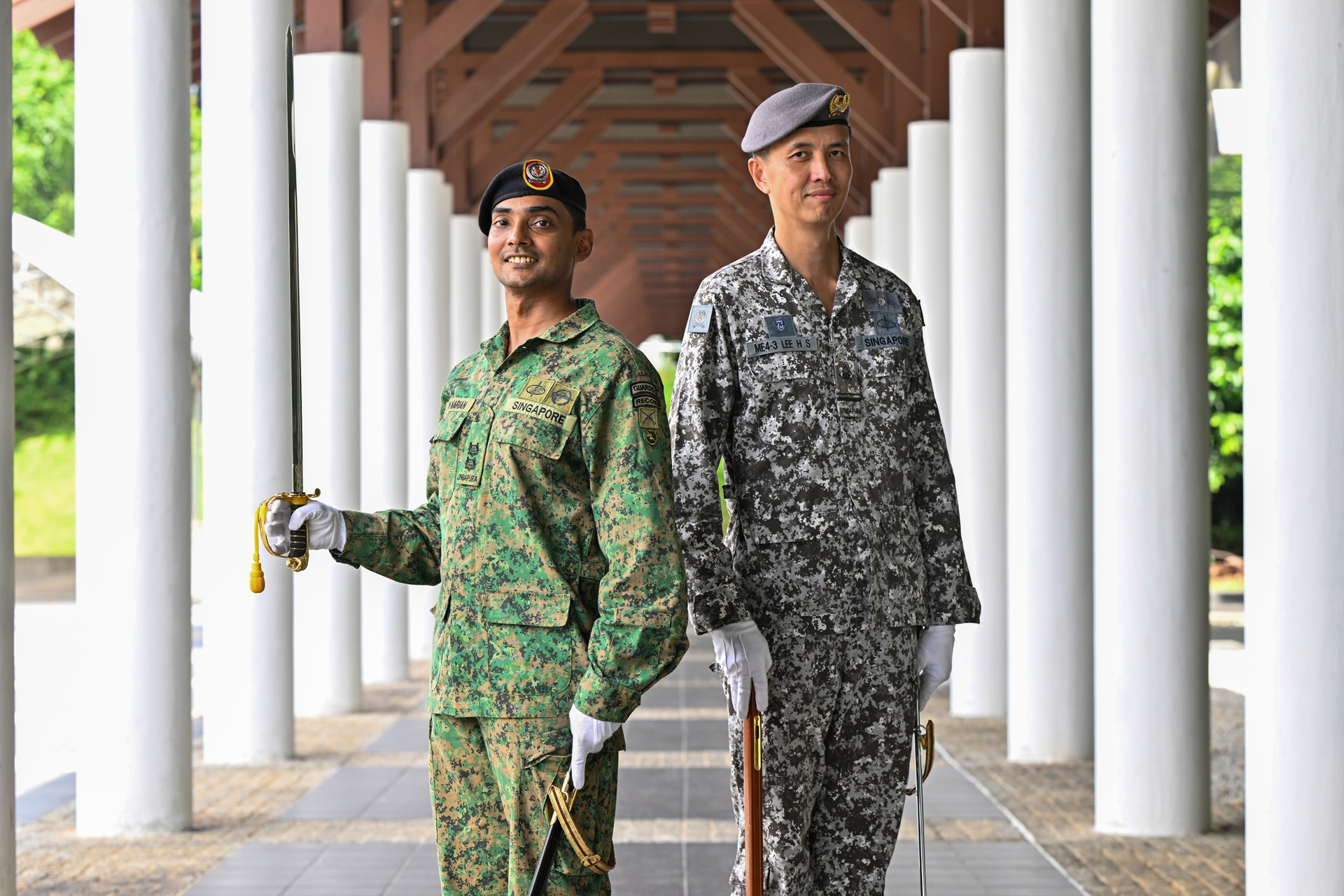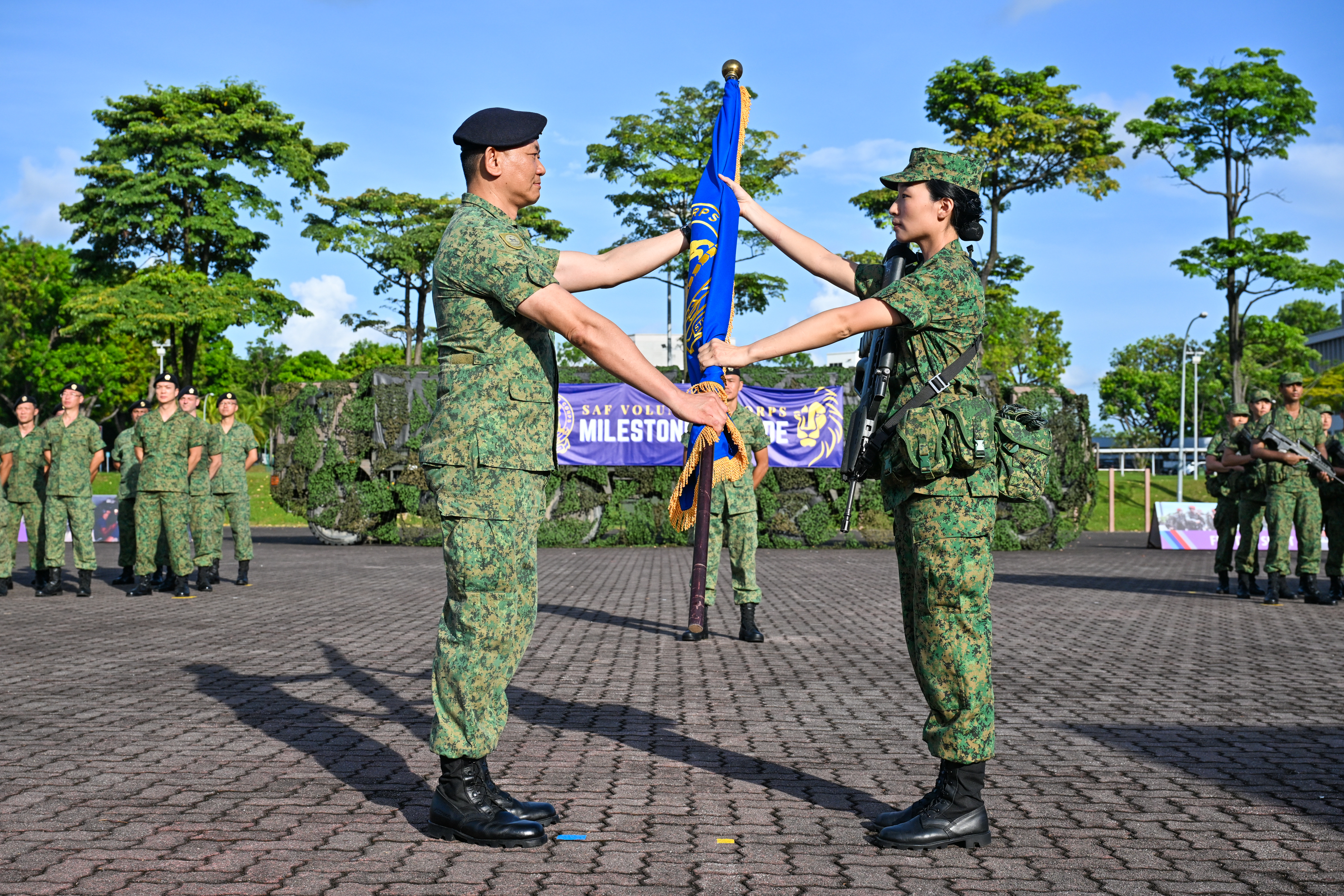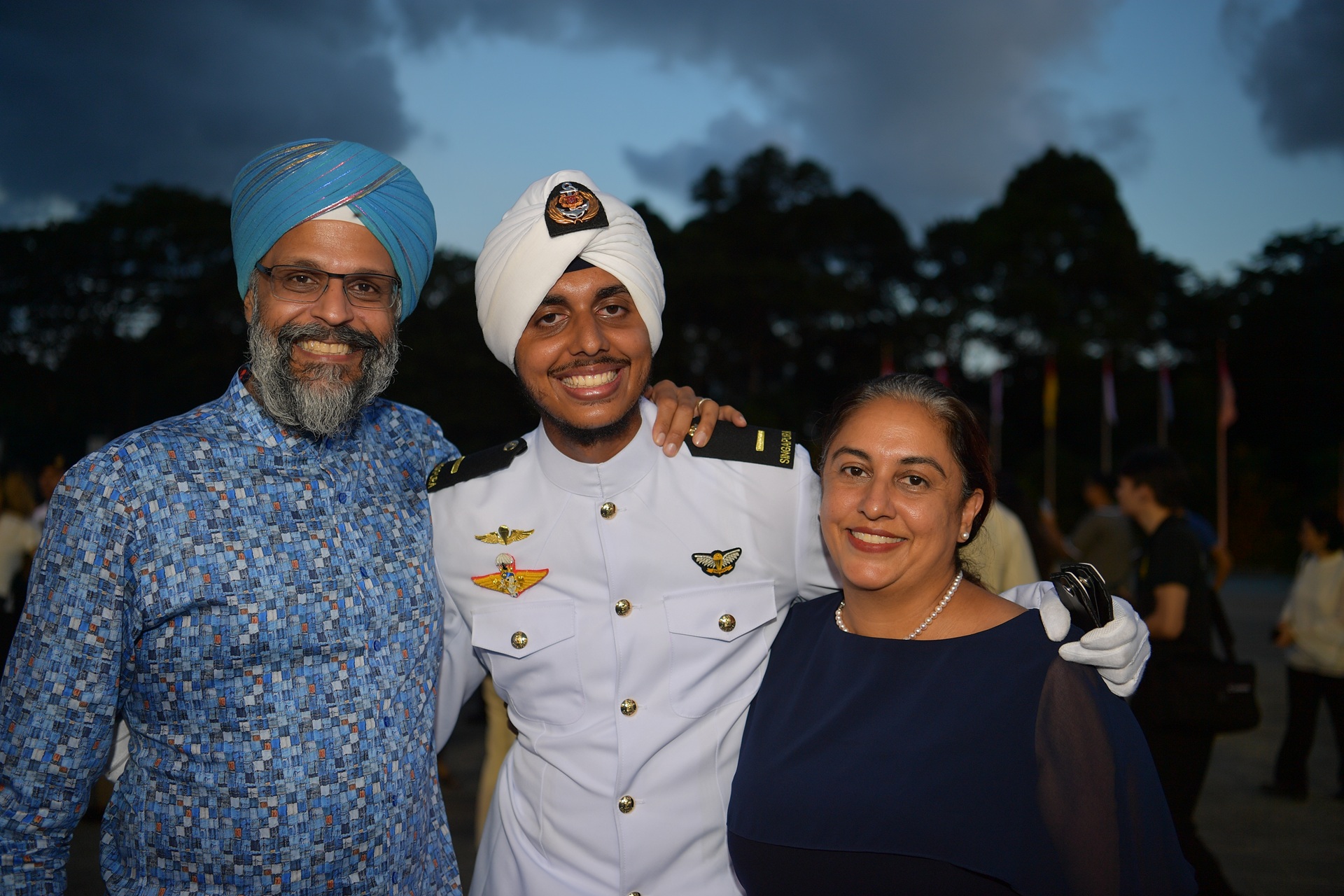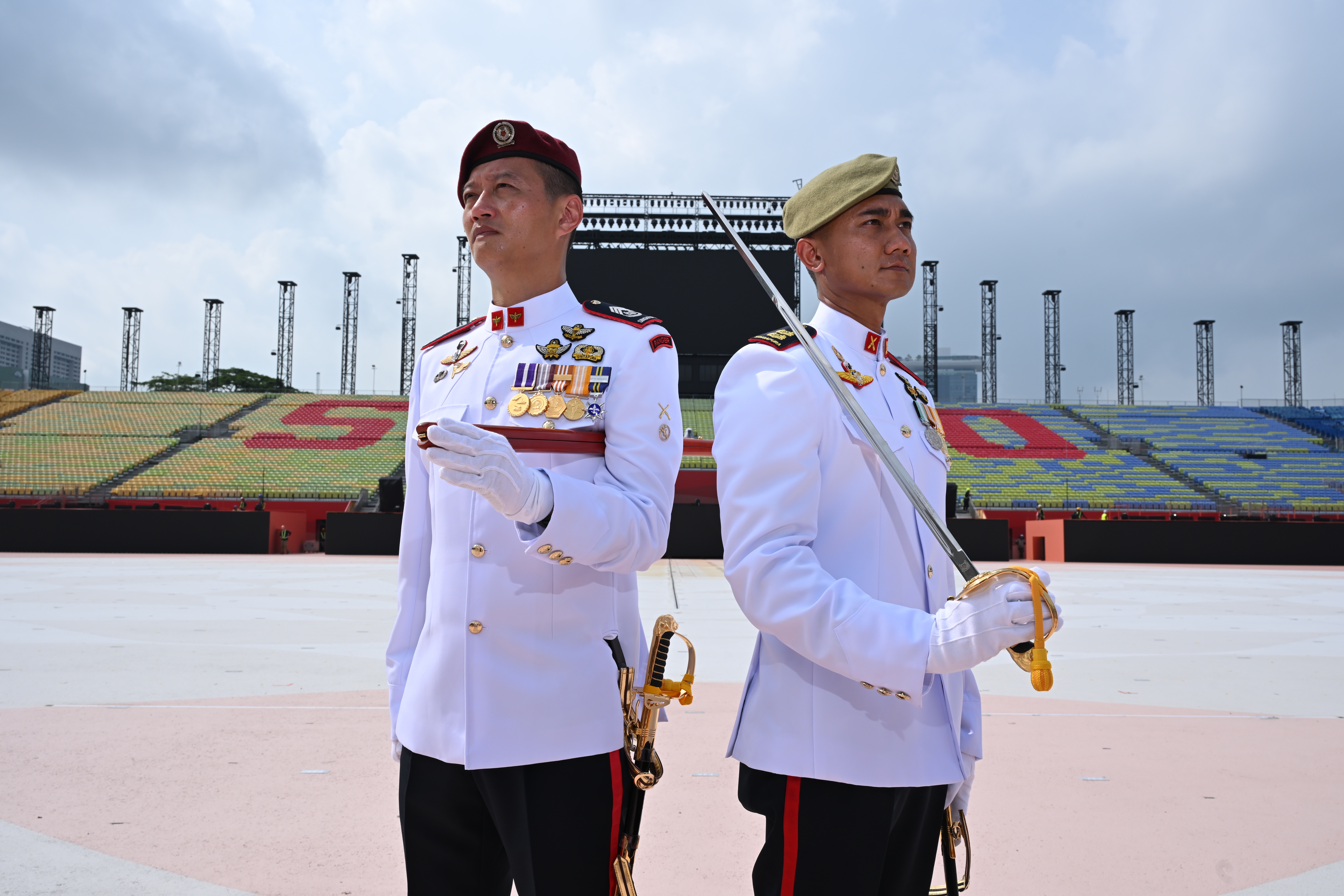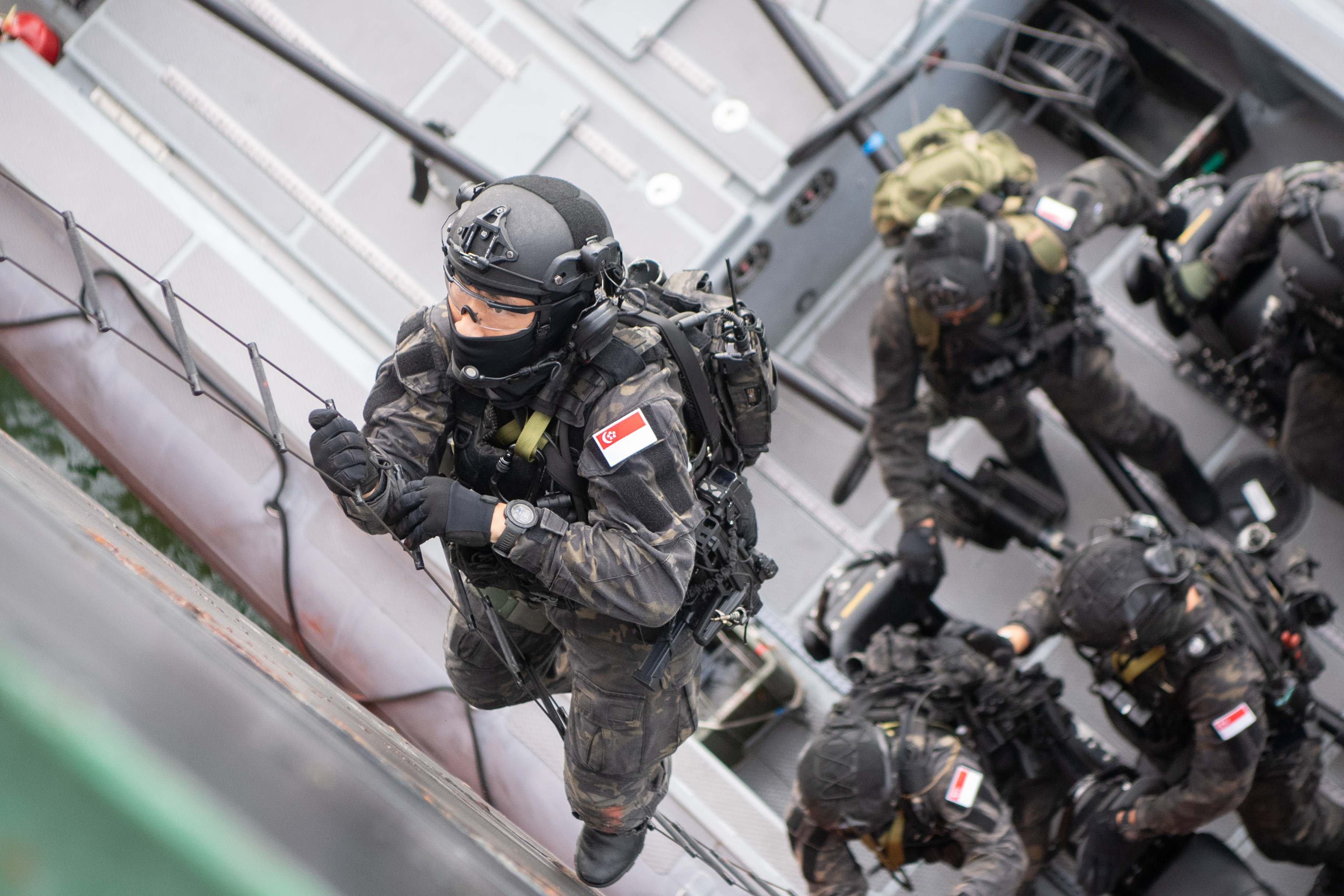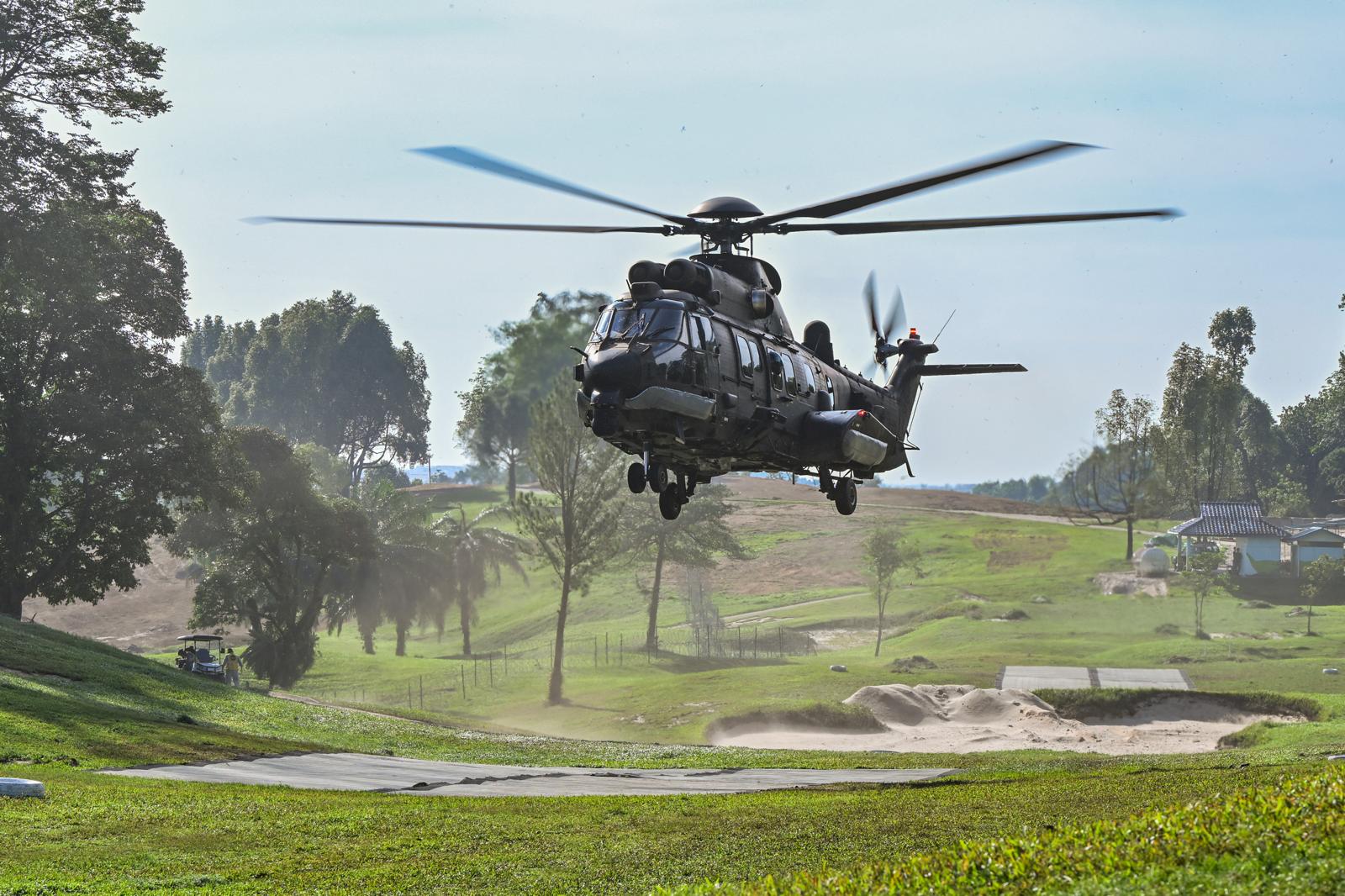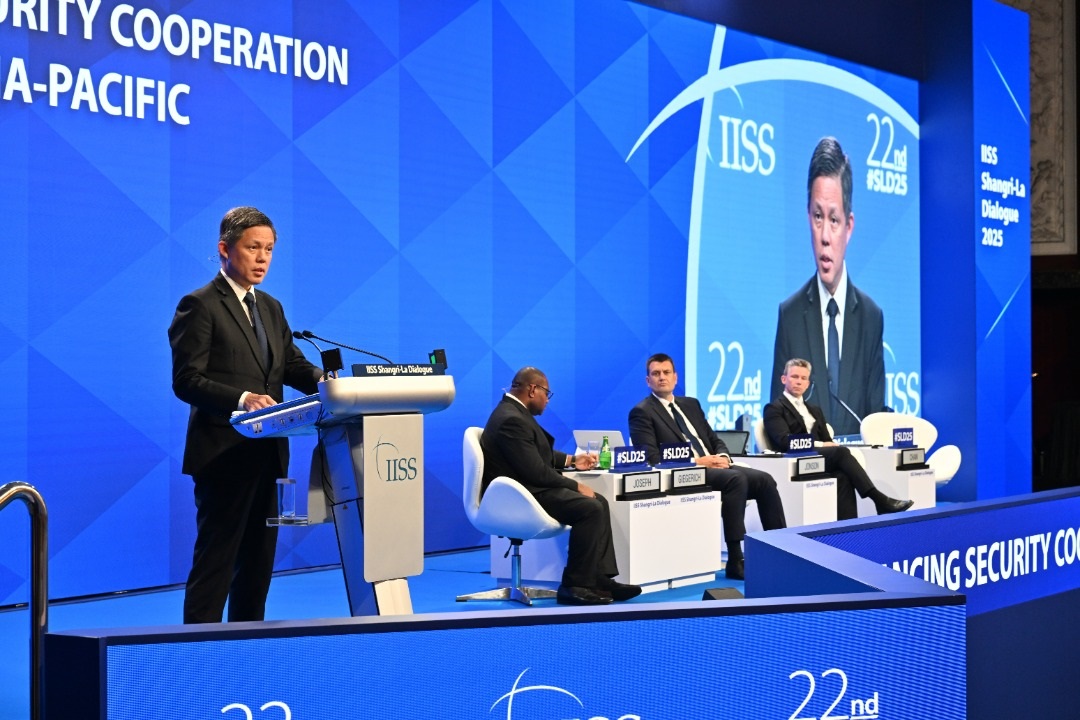SAFEGUARDING THE STRAITS
// STORY Gail Wan
// PHOTO PIONEER Photographers
The RSN's Coastal Command was established in 1988 to ensure the seaward defence and the maritime security of the waterway and its approaches. With the evolving security climate, COSCOM is constantly adapting its plans in order to strengthen its defence strategy, to stay ahead of the potential adversary.
Keeping a vigilant watch over Singapore waters throughout the year, COSCOM ensures the sea lines of communication are free of maritime threats, come "low or high waters".
"COSCOM's mission is real time and is crucial to protecting the continued use of the Singapore Strait by shipping. If disrupted, this will have far reaching consequences to Singapore's economy and to the global supply chain," said Commander COSCOM COL Tan Wee Beng.
"We must always ensure the freedom of use of the Straits, and that the maritime community is confident that the Singapore Straits are safe."
COSCOM has under its command the Anti-Submarine Patrol Vessel (APV) squadron, the Patrol Vessel (PV) squadron, the Mine Counter Measure Vessel (MCMV) squadron, the Coastal Surveillance and Defence squadron and the Shipping Control squadron.
While it had more of a constabulary role in its early days, COSCOM s role and responsibilities have expanded tremendously. Now, it is ready and capable of conducting a full range of maritime security operations which include:
- Conducting round-the-clock security patrols of the Singapore Straits
- Boarding and escorting selected merchant vessels by the Accompanying Sea Security Teams (ASSeT) when they call or depart from Singapore s port
- Escorting randomly selected vessels transiting the Singapore Straits
- Providing assistance to civil authorities during contingencies such as ferry mishaps, air disasters and anti-hijack operations.
- Conducting Mine Counter Measure operations where necessary, for example, clearing World War II bombs discovered in Singapore waters.
The maritime security environment has changed since 9-11, with the spectrum of maritime threats growing exponentially to include even potential attacks by transnational terrorists.
A strong multi-agency framework is in place to tackle such threats, with COSCOM working together with its Army counterpart 2PDF, as well as other Home Team agencies the Police Coast Guard (PCG), Maritime and Port Authority of Singapore (MPA) and Immigration and Checkpoints Authority (ICA) to safeguard key offshore installations and ensure overall maritime security.
A good tempo of training in various operational measures such as ASSeT boarding and maritime surveillance and naval presence patrols is necessary to ensure that the servicemen remain ready and competent at all times.
In order to mitigate the higher operational demands, COSCOM has introduced several measures over recent years, such as the multi-crew programme to obtain more operational capacity from the ships.
"We also have a system to closely track the sailing days and the amount of time our sailors spend away from home, to ensure that they get enough rest, and that there is good work-life balance. We also have a good logistic tracking system in place to ensure that our fighting systems are tip-top," said COL Tan.
ASSeT
Each ASSeT is made up of six personnel from the Shipping Control Squadron and two personnel from PCG.
ASSeTs are small teams of armed sea marshals deployed on certain vessels to deter and prevent mischief aboard the ships that call at, or depart from, Singapore waters.
When aboard, each ASSet will safeguard, and if necessary, control specific areas on the ship, so as to provide early warning if a terrorist-related activity or incident is detected.
Formed by servicemen from 180 SQN and the PCG, the teams enhance the RSN's capability in conducting pre-emptive measures against possible terrorist attacks.
Known as the shipping control squadron, 180 SQN has two primary functions: it collects and analyses shipping data, and monitors and controls ships in times of emergency.
CPT Gary Ow, Hd Shippping Control Section, told PIONEER: "When we first started with two teams in March 2005, we were pretty new to all this and had to consult many people, both locally and overseas, to learn a bit more about commercial practices, to close the knowledge gap."
"It has been a fruitful two years, but learning never stops. Everyday, when my guys go out to sea and interact with the ship crew, they learn something new," he said.
As for upcoming plans, CPT Ow revealed that with two years' experience under its belt, ASSeT is now the subject matter expert in boarding and is currently looking into sharing their experiences and knowledge with other Navy squadrons, to train other boarding teams.
MCM and Navigation Training Section (MNTS)
The Mine Countermeasure (MCM) squadron (194 Sqn) currently facilitates the training of all junior RSN officers once they graduate from Midshipmen School. These Officers-Under-Training (OUTs) will undergo nine months of progressive shipboard training to transform what they learn in theory into practical skills.
To acquire the necessary skills, they are allocated to the specific platforms where they will eventually serve as Navigating Officers once they are certified.
There are three main phases of OUT training: the pre-Watchkeeping and Navigation Course (WNC) phase, which includes the first-attachment phase, the vacation attachment phase and the final attachment phase; the WNC phase; and finally, the post-WNC phase.
MNTS is the overall coordinator of the training and it holds dedicated monthly sea sorties and shore training to make sure certain competencies are acquired in navigation and watchkeeping.
OUTs undergoing training at the Full Mission Ship-handling Simulator located at RSS Panglima.
OUT training used to be under the charge of the Fleet Exercise Training Section, but as 194 SQN has taken over the navigation sea training cadre for the whole RSN, it also took over the OUT training function in late 2005.
"We can be deemed the subject matter experts in navigation sea training and MNTS aims to provide first-class training to our OUTs and to serve as a bridge between school houses and operational units," said Hd MNTS, MAJ Neo Meng Keong.
"We recognise that our junior officers hold the future of the Navy in their hands."
MNTS is now looking into organising the OUTs into various appointments within their batch, for them to represent themselves at formation level, to provide feedback on issues such as training emphasis and welfare.
"n this way, there will be greater cohesion and commitment among them as they have a say and personal stake in their own training," explained MAJ Neo.
COSCOM Positive Experience Team (CPET)
CPET was an initiative that was launched by COSCOM last April, to provide a better sense of purpose and identity among the personnel and their families.
Essentially, it aims to promote seven key elements: Engaging and Meaningful Work, Sense of Belonging, Inspirational and Caring Leadership, Common Defining Experiences, Connecting Opportunities, Meeting Individual Needs and Values.
Some of the changes implemented include a new tagline, 'Navy's Frontline Force 24/7', which was printed on t-shirts and banners; regular visits and dialogues with Commander COSCOM; and ensuring they have a quality work-life balance.
COSCOM's Manpower Branch Head MAJ Alfred Boey said CPET also targets NSmen who return to COSCOM for In-Camp Training (ICT).
"For Exercise Apex last August, the main exercise for NSmen where we see close to 400 of them returning to COSCOM, we held a formalised induction for them and involved them in the planning stages," he said.
"At the end of the exercise, we organised a banyan (BBQ party) and invited their families and employers along too. We even gave them a CD which had pictures of NSmen in action."
MAJ Boey added that the response have been very good, with people feeling good about wearing their COSCOM T-shirt and being visited by Commander COSCOM before they sail for operational tasking during festive periods such as Chinese New Year.
"Getting the commitment and cohesion of the people within the formation is crucial, especially when we are involved in operations. How committed the person is or how well we work in a team is very important in our daily operations," he said.
Upcoming plans include a 20th anniversary Dinner and Dance.
Changi Command and Control Centre (Changi C2 Centre)
Located next to Changi Naval Base, the groundbreaking ceremony for the centre was carried out on 27 Mar.
Built with the possibility of supporting multilateral contingency, humanitarian aid and disaster relief operations and exercises in mind, the Changi Command and Control Centre will house a multilateral Operations and Exercise Centre (MOEC).
The RSN is taking a major stake and lead in the building of the complex. It is envisaged that the complex will enable the co-location of various maritime security-related agencies, as well as the sharing of maritime security information. Housing the agencies in the same location will help enhance the professional interaction among its personnel.
The complex can also provide a venue as a maritime security information and operations hub, where various navies and coast guards can gather, exercise and work together in a single location.
A navigator charting out the ship's position during deployment.
The crew conducting routine training in the Combat Info Centre on board the ship.
With these developments in the pipeline, it is evident COSCOM is continuously looking to expand its capabilities so as to better manage the widening spectrum of operations.
"COSCOM is, and will always be, looking for better ways of doing things, new fighting concepts, new technologies, new ways of thinking," said COL Tan.
"Our mind-set must be one that is tuned to managing rapidly changing situations and being able to find good solutions given whatever available information there is."
He added: "Our work is a meaningful one, our work and commitment have a direct impact on our national maritime security. We have good people here, people who are committed to the mission, and people who are committed to their work."
COSCOM looks set to be an exciting hot-spot as it gears up to meet evolving needs, to remain as the cornerstone of the nation's maritime security.
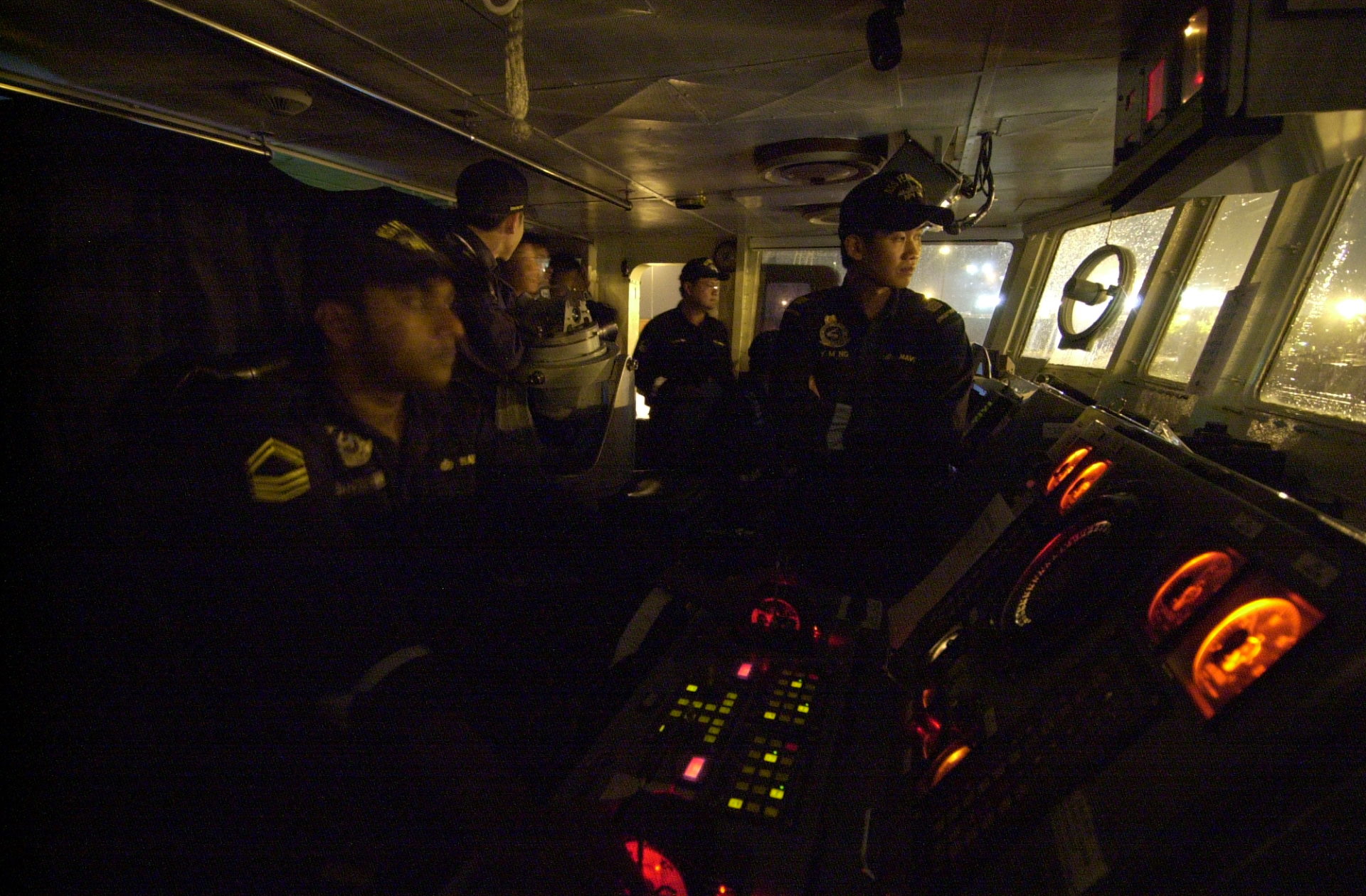
.jpg?sfvrsn=4eb1b86e_1)
